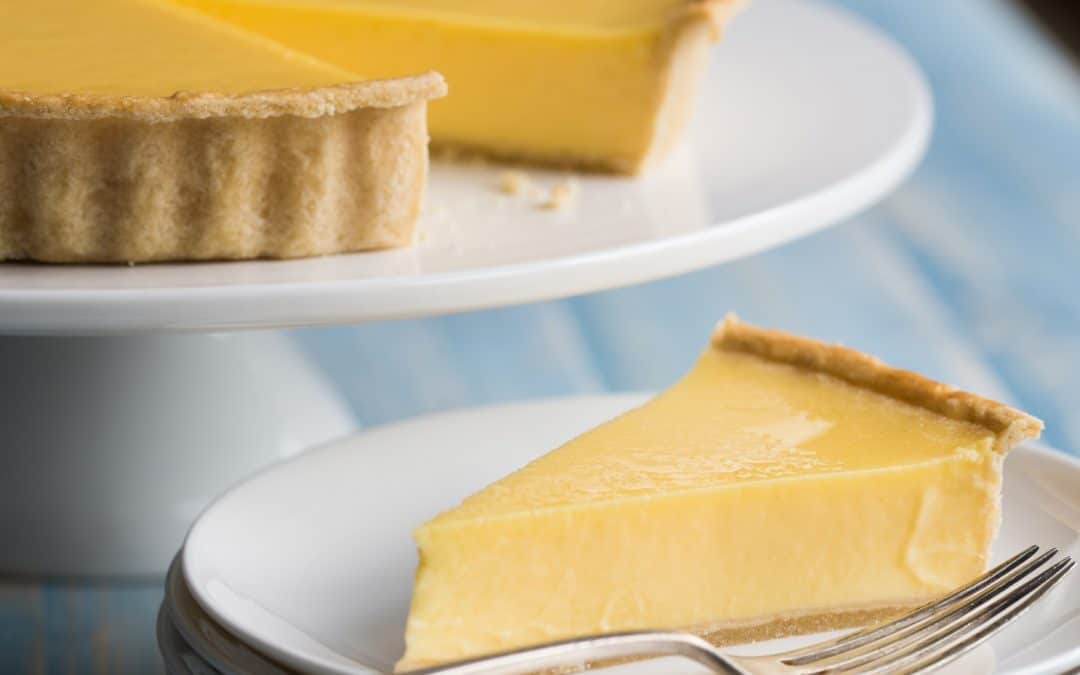This tart couldn’t be any more perfect if it tried. It’s sublime. A pitch-perfect balance of sharp tart lemon, sweetened in a silky-smooth cream custard, deep filled and set to within an inch of its life. Served fridge cold it needs nothing to accompany it, other than a spoon.
I only make one adjustment to the original recipe, which is to de/increase the volume of custard filling to fill my preferred tart case to the brim, which gives a good inch deep filling. Its texture really is one of its selling points and so for that reason I only ever make one large version rather than making smaller individual tartlets.
The original recipe is by Ruth Watson, perhaps better known as the Hotel Inspector, rather than a straight-talking food writer with a back catalogue of common sense recipes. Her books reflect modern eating habits and how we entertain these days, and her informal style is littered with wit.
This recipe presumes you have a blind baked pastry case to begin with. The tart itself bakes at a low temperature for a relatively short amount of time, so your pastry must be cooked through before you begin, and a good egg wash is essential to create a water tight seal for the filling.
Ingredients
(Makes one 24cm tart, portions into 10 or 12)
1 x blind baked pastry case
7 x eggs
400ml double cream
300g caster sugar
250ml lemon juice (roughly 4 – 5 fresh lemons)
Preheat the oven to 150 ⁰C.
Heat the cream gently over a low heat to a simmer.
Meanwhile beat the eggs with a fork (not a whisk) in a large bowl. Add the sugar and combine thoroughly then slowly add the lemon juice stirring as you do. Pour the hot cream in a slow, steady trickle onto the eggs stirring continuously. Pour the whole lot through a sieve into a clean jug.
Place the empty tart case on a baking tray in the middle of the oven (if there is a shelf above, remove it now to allow easy access.).
With the tart case on the tray in the oven, pour the lemon custard into the tart case and fill it as far as you dare go. The filling doesn’t rise at all during cooking, but watch the level all around the edge of the tart as you fill it and be aware your oven may be on a slope.
Close the door gently and leave the tart for 20 minutes before checking for wobble. There should be a slight wobble to the centre still; the filling will continue to set even after you remove it from the oven. (An over cooked tart won’t come to any harm, although it may start to crack and/or come away from the edges of the pastry and has the potential to become ‘grainy’. An under-cooked tart will be loosely set and be sloppy in the centre when portioned. They will both however be delicious, and they are both still homemade.)
Remove the tart from the oven and allow to cool in the tart case. Refrigerate once the tart has cooled to room temperature.

